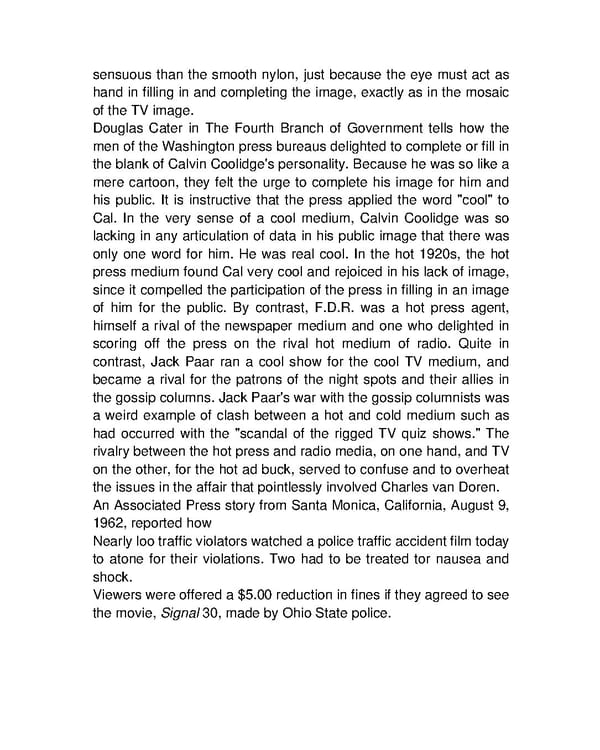sensuous than the smooth nylon, just because the eye must act as hand in filling in and completing the image, exactly as in the mosaic of the TV image. Douglas Cater in The Fourth Branch of Government tells how the men of the Washington press bureaus delighted to complete or fill in the blank of Calvin Coolidge's personality. Because he was so like a mere cartoon, they felt the urge to complete his image for him and his public. It is instructive that the press applied the word "cool" to Cal. In the very sense of a cool medium, Calvin Coolidge was so lacking in any articulation of data in his public image that there was only one word for him. He was real cool. In the hot 1920s, the hot press medium found Cal very cool and rejoiced in his lack of image, since it compelled the participation of the press in filling in an image of him for the public. By contrast, F.D.R. was a hot press agent, himself a rival of the newspaper medium and one who delighted in scoring off the press on the rival hot medium of radio. Quite in contrast, Jack Paar ran a cool show for the cool TV medium, and became a rival for the patrons of the night spots and their allies in the gossip columns. Jack Paar's war with the gossip columnists was a weird example of clash between a hot and cold medium such as had occurred with the "scandal of the rigged TV quiz shows." The rivalry between the hot press and radio media, on one hand, and TV on the other, for the hot ad buck, served to confuse and to overheat the issues in the affair that pointlessly involved Charles van Doren. An Associated Press story from Santa Monica, California, August 9, 1962, reported how Nearly loo traffic violators watched a police traffic accident film today to atone for their violations. Two had to be treated tor nausea and shock. Viewers were offered a $5.00 reduction in fines if they agreed to see the movie, Signal 30, made by Ohio State police.
 Understanding Media by Marshall McLuhan Page 37 Page 39
Understanding Media by Marshall McLuhan Page 37 Page 39